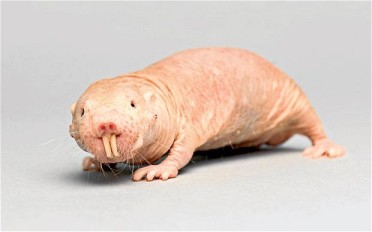The African naked mole rat might have the answer to why we live as long as we do.
When you’re 18-25, you’re indestructible. Nothing matters and life is good, if you’re a student and at university things like your demise from cancer, heart disease or diabetes (all of which have an inherited component) seems immeasurably distant.
For the past century or so, life expectancy has been going up at the almost unimaginable rate of six hours a day, every day. Something is keeping us alive, and we do not know what it is.
But one of the smaller mammals is beginning to hint at what it takes to make a century. The African naked mole rat, whose name describes its charming appearance, has a pair of fearsome front teeth. It lives in burrows in which one aggressive female prevents all the others from mating and forces them to look after her own offspring. The animal is about the same size as a mouse, but it lives eight times as long, with plenty getting to 30 or so.
Once we are past our own teenage years, we begin to age quicker. The average chance of death in a particular period doubles every eight years. The figures are more favourable in the prime of life and are at their best at the age of 10. If that schoolboy rate of mortality were to persist throughout life, most children born in 2000 would survive until the year 3300, which gives an uncomfortable insight into the power of bodily decay.
The mole rat does much better, for it stays young, healthy and fully fertile for almost all its days (which for an elderly animal is equivalent to an 80-year-old woman having the biological make-up of someone 50 years younger). And its longevity hints at some of the fundamental causes of ageing.
There are plenty of ideas around. One is that we poison ourselves with the by-products of our own metabolism; it has often been suggested that a restricted diet will help, or eating vitamins, fruit or vegetables, but the effects for people of normal weight are marginal at best.
Now, it seems that poisons from outside are more important: that fate depends not on how much you eat, but what it is. In the mole rat’s subterranean home, the only food and water comes from the roots and bulbs of plants growing above. Most plants are packed with all kinds of poisons – snowdrops, daffodils, and crocuses have bulbs that cause vomiting and worse, while garlic depends for its flavour on the same kind of stuff – and those in the African desert are even more noxious. So the mole rat has evolved defences that allow it to cope: its cells are so tough that they can deal with huge doses of lead, cadmium and other poisons and cope well with heat and starvation. Cells from other long-lived creatures (ourselves included) are also resistant to such stresses, hinting that an ability to deal with external challenges may be the source of longevity itself.
It seems the secret of long life is to have an embittered one.
